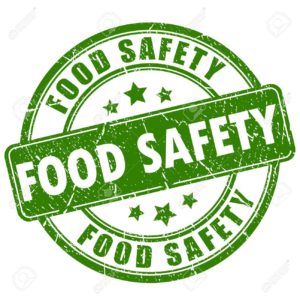CROSS CONTACT OF ANIMAL AND VEGETABLE PRODUCTS AT RESTAURANT CHAINS
By Jeanne Yacoubou, MS, VRG Researcher
This was in answer to an inquiry about cross contamination:
Whenever I interview a restaurant chain about the ingredients in its menu items, I always ask about their kitchen protocols. The reason for this is obvious: Even a completely vegan entrée can be prepared with utensils, on cutting boards or in cookware used to make dishes containing animal products.
Keep in mind that the official company response may not always reflect what actually occurs in a specific store on a certain day. Be prudent and always ask a manager to confirm what a VRG review states is standard protocol for a particular restaurant chain. Feel free to share our review as basis for your inquiry.
I assume nothing about kitchen protocols because they vary widely. Neither should you.
In general: The only thing all chains have told me is that there is always the risk of accidental (that is, unintentional) cross contact between meat & vegetable products. They make this statement to avoid legal liability. (If you are concerned, to be on the safe side, you may want to only eat in vegan or vegetarian restaurants.)
Also to protect themselves, chains tell me that their suppliers are subject to change without notice. Animal ingredients could be introduced for a previously vegan-sourced ingredient. This may happen before menus & websites are updated. It may be rare, but if you are really concerned or suspicious, always ask to speak to a manager. Asking to see an ingredient label may be warranted, too.
Furthermore, because definitions of “vegan” and “vegetarian” vary from chain to chain, do not assume that these menu icons guarantee anything about cross contamination.
Incidentally, one corporate chef called my cross contamination questions “trivial” saying that it was “standard procedure” to keep utensils, cutting boards & cookware used for meat products separate from those used for vegetable products. Such comments never dissuade me from asking about all preparation techniques for vegan menu options. In fact, it is precisely those chains that express this sentiment which worry me the most. So I persist in my line of questioning even more.
Some chains color code their utensils, cutting boards & cookware but most do not. In this manner, employees immediately know which utensil, board, pan or storage container is designated “vegetable only” or “meat only” and, hopefully, keep everything separate. Those that do not color code admit that utensils, cutting boards & cookware used for meat products one day could be used for vegetable products the next day. They are quick to point out however that everything is sanitized between uses.
It appears from my discussions with staff at numerous chains that during the sanitizing process itself, all prep tools, specially designated or not, are washed together in the same soapy liquid. If this is a concern because you’re worried about cross contact, inquire of the manager for more details on their washing procedure.
Being neither vegetable or meat (in the traditional sense), dairy falls into a murky area. I would recommend asking specifically about cross contact with dairy especially if you are vegan or have a dairy allergy.
Here are some tips to avoid potential cross contamination of vegetable & meat products at restaurant chains:
• Request that your order be prepared for you in freshly sanitized cookware using utensils that are also clean.
• At a buffet table, request that serving spoons for items you wish to select are exchanged for freshly sanitized ones before you take your portions.
• For grilled vegetables, tofu, tempeh, etc. ask specifically if meats, poultry or seafood are grilled at the same place on the grill or in splatter distance from where the meats, poultry or seafood are prepared. Ask for separate, isolated grilling if needed.
• Fried foods present a unique opportunity for cross contamination. Ask if animal products or those with dairy-containing breading, are fried along with vegan items or in a designated fryer.
• Be sure to have empathy for your server and restaurant employees. Remember that they are busy, may or may not be knowledgeable, and it is hard to meet everyone’s needs.
For more information on restaurant chains, see: https://www.vrg.org/fastfoodinfo.php
For information on vegetarian restaurants, see: VRG Online Veggie Restaurant Guide
For ingredient information, see: https://www.vrg.org/ingredients/index.php
To support The Vegetarian Resource Group research, donate at Donate to The Vegetarian Resource Group or join at https://www.vrg.org/member/2013sv
The contents of this posting, our website, and our other publications, including Vegetarian Journal, are not intended to provide personal medical advice. Medical advice should be obtained from a qualified health professional. We often depend on product and ingredient information from company statements. It is impossible to be 100% sure about a statement, info can change, people have different views, and mistakes can be made. Please use your best judgment about whether a product is suitable for you. To be sure, do further research or confirmation on your own.
People have different viewpoints. Some feel eating vegetarian in non-vegetarian restaurants will promote more vegan or vegetarian options, while others prefer to only patronize vegetarian or vegan eateries. Do what works for you.

